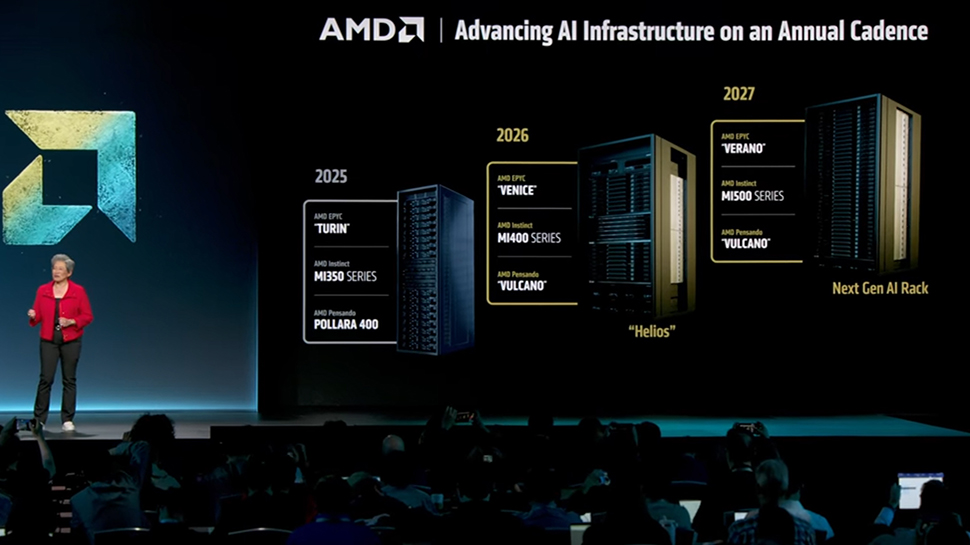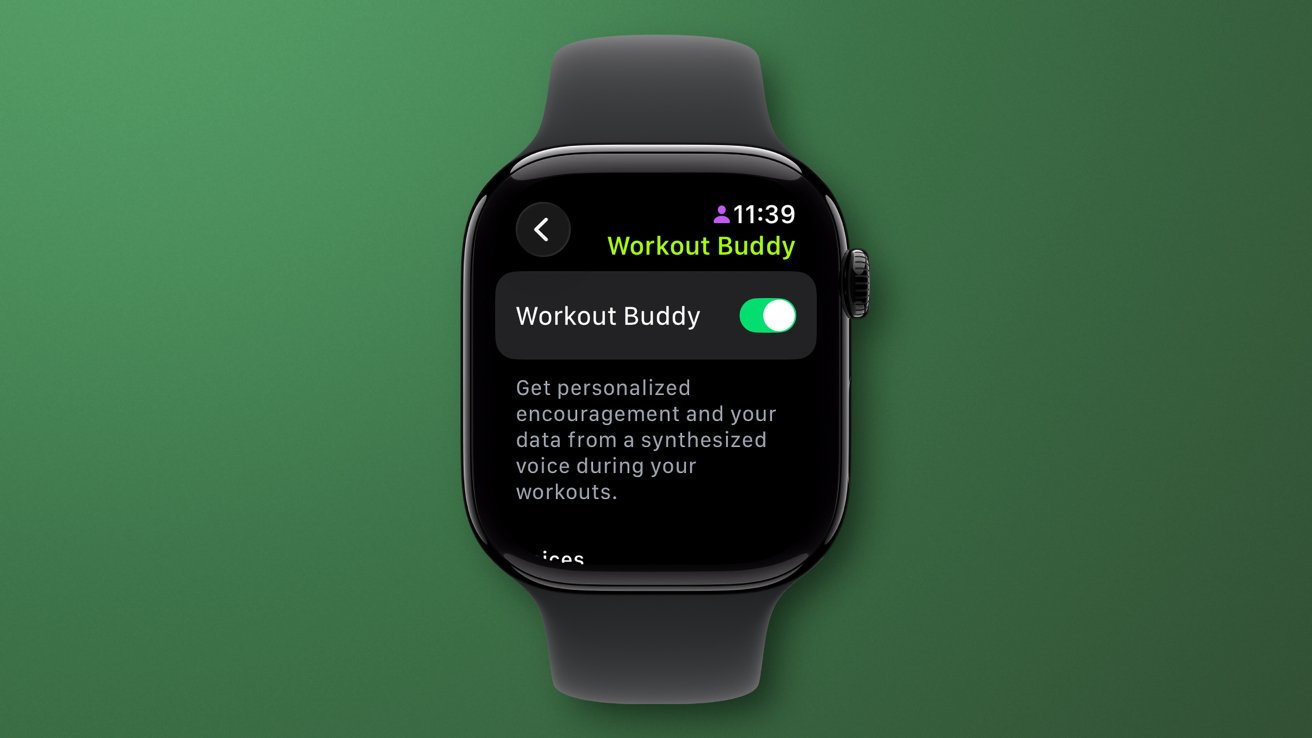IBM Fundamentals: Clouddatabases Redis Helloworld Python
Supercharging Applications with Speed: A Deep Dive into IBM Clouddatabases Redis Helloworld Python Imagine you're building a bustling e-commerce platform. Thousands of users are simultaneously browsing products, adding items to their carts, and checking out. Each request hits your database, slowing down response times, frustrating customers, and potentially leading to lost sales. This isn't a hypothetical scenario; it's a daily challenge for businesses of all sizes. The need for speed and responsiveness in modern applications is paramount, driven by the expectation of instant gratification in the digital age. Today’s applications are increasingly cloud-native, demanding scalability, resilience, and low latency. Security is no longer an afterthought but a foundational requirement, with the rise of zero-trust architectures and stringent data privacy regulations. Furthermore, many organizations operate in hybrid environments, requiring seamless integration between on-premises systems and the cloud. IBM understands these challenges, and services like Clouddatabases Redis Helloworld Python are designed to address them head-on. Companies like Maersk, a global leader in container logistics, leverage IBM Cloud databases to optimize their supply chain operations, demonstrating the real-world impact of these technologies. This blog post will provide a comprehensive guide to this powerful service, equipping you with the knowledge to unlock its potential for your applications. What is "Clouddatabases Redis Helloworld Python"? At its core, "Clouddatabases Redis Helloworld Python" is a fully managed Redis database service offered on IBM Cloud. But let's break that down. Redis (Remote Dictionary Server) is an in-memory data structure store, used as a database, cache, message broker, and streaming engine. Unlike traditional relational databases that store data on disk, Redis keeps data in RAM, resulting in significantly faster read and write operations. The "Helloworld Python" aspect refers to a pre-configured environment and sample application designed to get you up and running quickly with Redis and Python. It's a fantastic starting point for developers new to Redis or IBM Cloud. What problems does it solve? Slow Database Performance: Redis acts as a caching layer, storing frequently accessed data in memory, reducing the load on your primary database. Session Management: Redis provides a fast and reliable way to store user session data, improving application responsiveness. Real-time Analytics: Redis's data structures and speed make it ideal for real-time analytics and dashboards. Message Queuing: Redis can be used as a message broker, enabling asynchronous communication between different parts of your application. Leaderboards and Counting: Redis's sorted sets are perfect for implementing leaderboards and tracking real-time counts. Major Components: Redis Cluster: The underlying Redis deployment, providing high availability and scalability. IBM Cloud Console: The web-based interface for managing your Redis instance. IBM Cloud CLI: A command-line tool for automating tasks and managing resources. Python Client Library: The redis-py library, used to interact with the Redis database from your Python applications. Helloworld Application: A simple Python application demonstrating basic Redis operations. Companies like Airbnb and Twitter utilize Redis extensively to enhance their user experience and handle massive data volumes. For Airbnb, Redis powers features like real-time search and recommendations. Why Use "Clouddatabases Redis Helloworld Python"? Before the advent of managed Redis services, developers often faced significant challenges: Complex Setup and Configuration: Setting up and configuring a Redis cluster manually is time-consuming and requires specialized expertise. Maintenance Overhead: Maintaining a Redis cluster, including patching, backups, and scaling, can be a significant burden. High Availability Concerns: Ensuring high availability and fault tolerance requires careful planning and implementation. Security Vulnerabilities: Securing a Redis deployment requires expertise in network security and access control. "Clouddatabases Redis Helloworld Python" eliminates these challenges by providing a fully managed service. IBM handles the infrastructure, maintenance, and security, allowing you to focus on building your application. User Cases: E-commerce Platform (Retail): A retailer uses Redis to cache product catalog data, reducing database load and improving page load times. This leads to a better user experience and increased sales. Gaming Application (Entertainment): A game developer uses Redis to store player session data and leaderboard scores, providing a fast and responsive gaming experience. Financial Trading Platform (Finance): A financial institution uses Redis to cache market data and track real-time tr

Supercharging Applications with Speed: A Deep Dive into IBM Clouddatabases Redis Helloworld Python
Imagine you're building a bustling e-commerce platform. Thousands of users are simultaneously browsing products, adding items to their carts, and checking out. Each request hits your database, slowing down response times, frustrating customers, and potentially leading to lost sales. This isn't a hypothetical scenario; it's a daily challenge for businesses of all sizes. The need for speed and responsiveness in modern applications is paramount, driven by the expectation of instant gratification in the digital age.
Today’s applications are increasingly cloud-native, demanding scalability, resilience, and low latency. Security is no longer an afterthought but a foundational requirement, with the rise of zero-trust architectures and stringent data privacy regulations. Furthermore, many organizations operate in hybrid environments, requiring seamless integration between on-premises systems and the cloud. IBM understands these challenges, and services like Clouddatabases Redis Helloworld Python are designed to address them head-on. Companies like Maersk, a global leader in container logistics, leverage IBM Cloud databases to optimize their supply chain operations, demonstrating the real-world impact of these technologies. This blog post will provide a comprehensive guide to this powerful service, equipping you with the knowledge to unlock its potential for your applications.
What is "Clouddatabases Redis Helloworld Python"?
At its core, "Clouddatabases Redis Helloworld Python" is a fully managed Redis database service offered on IBM Cloud. But let's break that down. Redis (Remote Dictionary Server) is an in-memory data structure store, used as a database, cache, message broker, and streaming engine. Unlike traditional relational databases that store data on disk, Redis keeps data in RAM, resulting in significantly faster read and write operations.
The "Helloworld Python" aspect refers to a pre-configured environment and sample application designed to get you up and running quickly with Redis and Python. It's a fantastic starting point for developers new to Redis or IBM Cloud.
What problems does it solve?
- Slow Database Performance: Redis acts as a caching layer, storing frequently accessed data in memory, reducing the load on your primary database.
- Session Management: Redis provides a fast and reliable way to store user session data, improving application responsiveness.
- Real-time Analytics: Redis's data structures and speed make it ideal for real-time analytics and dashboards.
- Message Queuing: Redis can be used as a message broker, enabling asynchronous communication between different parts of your application.
- Leaderboards and Counting: Redis's sorted sets are perfect for implementing leaderboards and tracking real-time counts.
Major Components:
- Redis Cluster: The underlying Redis deployment, providing high availability and scalability.
- IBM Cloud Console: The web-based interface for managing your Redis instance.
- IBM Cloud CLI: A command-line tool for automating tasks and managing resources.
-
Python Client Library: The
redis-pylibrary, used to interact with the Redis database from your Python applications. - Helloworld Application: A simple Python application demonstrating basic Redis operations.
Companies like Airbnb and Twitter utilize Redis extensively to enhance their user experience and handle massive data volumes. For Airbnb, Redis powers features like real-time search and recommendations.
Why Use "Clouddatabases Redis Helloworld Python"?
Before the advent of managed Redis services, developers often faced significant challenges:
- Complex Setup and Configuration: Setting up and configuring a Redis cluster manually is time-consuming and requires specialized expertise.
- Maintenance Overhead: Maintaining a Redis cluster, including patching, backups, and scaling, can be a significant burden.
- High Availability Concerns: Ensuring high availability and fault tolerance requires careful planning and implementation.
- Security Vulnerabilities: Securing a Redis deployment requires expertise in network security and access control.
"Clouddatabases Redis Helloworld Python" eliminates these challenges by providing a fully managed service. IBM handles the infrastructure, maintenance, and security, allowing you to focus on building your application.
User Cases:
- E-commerce Platform (Retail): A retailer uses Redis to cache product catalog data, reducing database load and improving page load times. This leads to a better user experience and increased sales.
- Gaming Application (Entertainment): A game developer uses Redis to store player session data and leaderboard scores, providing a fast and responsive gaming experience.
- Financial Trading Platform (Finance): A financial institution uses Redis to cache market data and track real-time trading activity, enabling faster and more accurate trading decisions.
Key Features and Capabilities
Here are 10 key features of IBM Clouddatabases Redis:
-
Fully Managed: IBM handles all the operational aspects of Redis, including provisioning, patching, backups, and scaling.
- Use Case: Reduces operational overhead for development teams.
- Flow: Developer deploys Redis instance -> IBM manages infrastructure -> Developer focuses on application logic.
-
High Availability: Redis clusters are designed for high availability, with automatic failover and data replication.
- Use Case: Ensures continuous application uptime.
- Flow: Primary node failure -> Automatic failover to replica node -> Application continues to function.
-
Scalability: Easily scale your Redis instance up or down to meet changing demands.
- Use Case: Handles peak traffic during promotional events.
- Flow: Increased traffic -> Scale up Redis instance -> Improved performance.
-
Security: Data is encrypted in transit and at rest, with robust access control mechanisms.
- Use Case: Protects sensitive user data.
- Flow: Data transmission -> Encryption -> Secure storage.
-
Redis Compatibility: Fully compatible with standard Redis clients and APIs.
- Use Case: Seamless integration with existing applications.
-
Data Persistence: Supports various persistence options, including RDB snapshots and AOF logging.
- Use Case: Prevents data loss in case of failures.
-
Monitoring and Logging: Provides comprehensive monitoring and logging capabilities.
- Use Case: Identifies performance bottlenecks and troubleshoot issues.
-
Integration with IBM Cloud Services: Seamlessly integrates with other IBM Cloud services, such as Cloud Foundry and Kubernetes.
- Use Case: Builds a complete cloud-native application.
-
Geographically Distributed Deployments: Deploy Redis instances in multiple regions for low latency and disaster recovery.
- Use Case: Serves global users with optimal performance.
-
RedisInsight Integration: Provides access to RedisInsight, a powerful GUI tool for visualizing and managing your Redis data.
- Use Case: Easily inspect and analyze Redis data.
Detailed Practical Use Cases
- Real-time Chat Application (Social Media): Problem: Handling a large number of concurrent chat sessions with low latency. Solution: Use Redis to store chat messages and user presence information. Outcome: A responsive and scalable chat application.
- Personalized Recommendations (E-commerce): Problem: Providing personalized product recommendations to users in real-time. Solution: Use Redis to store user preferences and product data. Outcome: Increased sales and customer engagement.
- Fraud Detection (Finance): Problem: Detecting fraudulent transactions in real-time. Solution: Use Redis to track transaction patterns and identify anomalies. Outcome: Reduced fraud losses.
- API Rate Limiting (Software as a Service): Problem: Protecting APIs from abuse and overload. Solution: Use Redis to track API usage and enforce rate limits. Outcome: Improved API stability and security.
- A/B Testing (Marketing): Problem: Running A/B tests to optimize marketing campaigns. Solution: Use Redis to store A/B test results and track user behavior. Outcome: Improved campaign performance.
- IoT Data Aggregation (Industrial IoT): Problem: Aggregating and processing data from a large number of IoT devices. Solution: Use Redis to store and process sensor data in real-time. Outcome: Improved operational efficiency and predictive maintenance.
Architecture and Ecosystem Integration
IBM Clouddatabases Redis integrates seamlessly into the broader IBM Cloud ecosystem. It can be deployed on IBM Cloud Kubernetes Service (IKS) or IBM Cloud Foundry, providing flexibility and portability. It also integrates with other IBM Cloud services, such as IBM Cloudant (NoSQL database) and IBM Watson (AI services).
graph LR
A[User Application] --> B(IBM Cloudant);
A --> C(IBM Clouddatabases Redis);
C --> B;
A --> D(IBM Watson);
D --> C;
E[IBM Cloud Kubernetes Service/Cloud Foundry] --> C;
F[External Applications] --> C;
This diagram illustrates how Redis acts as a central caching and data store, connecting user applications, IBM Cloudant, IBM Watson, and external applications. The underlying infrastructure can be either IBM Cloud Kubernetes Service or IBM Cloud Foundry.
Hands-On: Step-by-Step Tutorial
This tutorial will guide you through creating a Redis instance and deploying the Helloworld Python application using the IBM Cloud CLI.
Prerequisites:
- IBM Cloud account
- IBM Cloud CLI installed and configured
Steps:
- Create a Redis Instance:
ibmcloud resource service-instance-create clouddatabases-redis-helloworld-python my-redis-instance --location us-south
- Get Connection Details:
ibmcloud resource service-instance-details my-redis-instance
This command will output the hostname, port, and password for your Redis instance.
- Clone the Helloworld Application:
git clone https://github.com/IBM/clouddatabases-redis-helloworld-python.git
cd clouddatabases-redis-helloworld-python
- Configure the Application:
Edit the app.py file and replace the placeholder values for redis_host, redis_port, and redis_password with the connection details obtained in step 2.
- Install Dependencies:
pip install -r requirements.txt
- Run the Application:
python app.py
The application will start and display a message indicating that it is connected to Redis. You can then interact with the application by sending HTTP requests to http://localhost:5000.
Screenshot Description: (Imagine a screenshot here showing the output of the python app.py command, confirming a successful connection to Redis.)
Pricing Deep Dive
IBM Clouddatabases Redis offers a variety of pricing plans based on instance size, data storage, and network traffic. The pricing is generally tiered, with larger instances costing more. As of October 26, 2023, the smallest instance (XS) starts around $10/month.
Cost Optimization Tips:
- Right-size your instance: Choose an instance size that meets your application's needs without overprovisioning.
- Use data compression: Compress your data before storing it in Redis to reduce storage costs.
- Monitor your usage: Regularly monitor your Redis usage to identify potential cost savings.
Cautionary Notes: Network egress charges can add up quickly, so be mindful of the amount of data you are transferring out of IBM Cloud.
Security, Compliance, and Governance
IBM Clouddatabases Redis provides robust security features, including:
- Data Encryption: Data is encrypted in transit and at rest using TLS/SSL.
- Access Control: Role-based access control (RBAC) allows you to control who can access your Redis instance.
- Network Security: Virtual Private Cloud (VPC) integration allows you to isolate your Redis instance from the public internet.
- Compliance: IBM Cloud is compliant with a wide range of industry standards, including SOC 2, ISO 27001, and HIPAA.
Integration with Other IBM Services
- IBM Cloudant: Use Redis as a caching layer for Cloudant data.
- IBM Cloud Functions: Trigger serverless functions based on Redis events.
- IBM Watson Discovery: Store and analyze data from Watson Discovery in Redis.
- IBM App ID: Use Redis to store user session data for IBM App ID.
- IBM Key Protect: Use IBM Key Protect to manage encryption keys for your Redis instance.
Comparison with Other Services
| Feature | IBM Clouddatabases Redis | AWS ElastiCache for Redis | Google Cloud Memorystore for Redis |
|---|---|---|---|
| Management | Fully Managed | Managed | Managed |
| Pricing | Tiered, competitive | Tiered, competitive | Tiered, competitive |
| Integration with IBM Cloud | Seamless | Limited | Limited |
| Geographic Availability | Extensive | Extensive | Extensive |
| Security Features | Robust | Robust | Robust |
Decision Advice: If you are already heavily invested in the IBM Cloud ecosystem, IBM Clouddatabases Redis is the natural choice. It offers seamless integration with other IBM Cloud services and provides a consistent user experience. If you are using AWS or Google Cloud, their respective Redis services are also excellent options.
Common Mistakes and Misconceptions
- Not Right-Sizing the Instance: Choosing an instance size that is too small can lead to performance issues.
- Ignoring Data Persistence: Failing to configure data persistence can result in data loss.
- Not Securing the Redis Instance: Leaving the Redis instance open to the public internet can create a security vulnerability.
- Misunderstanding Redis Data Structures: Using the wrong data structure for a particular use case can lead to performance problems.
- Overlooking Network Egress Costs: Not monitoring network egress costs can lead to unexpected bills.
Pros and Cons Summary
Pros:
- Fully managed service
- High availability and scalability
- Robust security features
- Seamless integration with IBM Cloud
- Competitive pricing
Cons:
- Vendor lock-in (to IBM Cloud)
- Potential network egress costs
- Limited customization options compared to self-managed Redis.
Best Practices for Production Use
- Security: Implement strong access control policies and encrypt data in transit and at rest.
- Monitoring: Monitor key metrics, such as CPU usage, memory usage, and network traffic.
- Automation: Automate provisioning, scaling, and patching using the IBM Cloud CLI or Terraform.
- Scaling: Plan for scaling your Redis instance to handle peak traffic.
- Backups: Regularly back up your Redis data to prevent data loss.
Conclusion and Final Thoughts
IBM Clouddatabases Redis Helloworld Python is a powerful and versatile service that can significantly improve the performance and scalability of your applications. By leveraging its fully managed nature, robust security features, and seamless integration with the IBM Cloud ecosystem, you can focus on building innovative solutions without worrying about the complexities of managing a Redis cluster.
The future of Redis on IBM Cloud is bright, with ongoing investments in new features and capabilities. We encourage you to explore the service and discover how it can benefit your organization.
Ready to get started? Visit the IBM Cloud catalog today and create your first Redis instance: https://cloud.ibm.com/catalog/services/clouddatabases-redis














































































































































































![[The AI Show Episode 154]: AI Answers: The Future of AI Agents at Work, Building an AI Roadmap, Choosing the Right Tools, & Responsible AI Use](https://www.marketingaiinstitute.com/hubfs/ep%20154%20cover.png)
![[The AI Show Episode 153]: OpenAI Releases o3-Pro, Disney Sues Midjourney, Altman: “Gentle Singularity” Is Here, AI and Jobs & News Sites Getting Crushed by AI Search](https://www.marketingaiinstitute.com/hubfs/ep%20153%20cover.png)





















































































































![[FREE EBOOKS] The Chief AI Officer’s Handbook, Natural Language Processing with Python & Four More Best Selling Titles](https://www.javacodegeeks.com/wp-content/uploads/2012/12/jcg-logo.jpg)










































































![GrandChase tier list of the best characters available [June 2025]](https://media.pocketgamer.com/artwork/na-33057-1637756796/grandchase-ios-android-3rd-anniversary.jpg?#)




































































_Frank_Peters_Alamy.jpg?width=1280&auto=webp&quality=80&disable=upscale#)














































































































![Apple Weighs Acquisition of AI Startup Perplexity in Internal Talks [Report]](https://www.iclarified.com/images/news/97674/97674/97674-640.jpg)
![Oakley and Meta Launch Smart Glasses for Athletes With AI, 3K Camera, More [Video]](https://www.iclarified.com/images/news/97665/97665/97665-640.jpg)

![How to Get Your Parents to Buy You a Mac, According to Apple [Video]](https://www.iclarified.com/images/news/97671/97671/97671-640.jpg)






















![New accessibility settings announced for Steam Big Picture Mode and SteamOS [Beta]](https://www.ghacks.net/wp-content/uploads/2025/06/New-accessibility-settings-announced-for-Steam-Big-Picture-Mode-and-SteamOS.jpg)














































